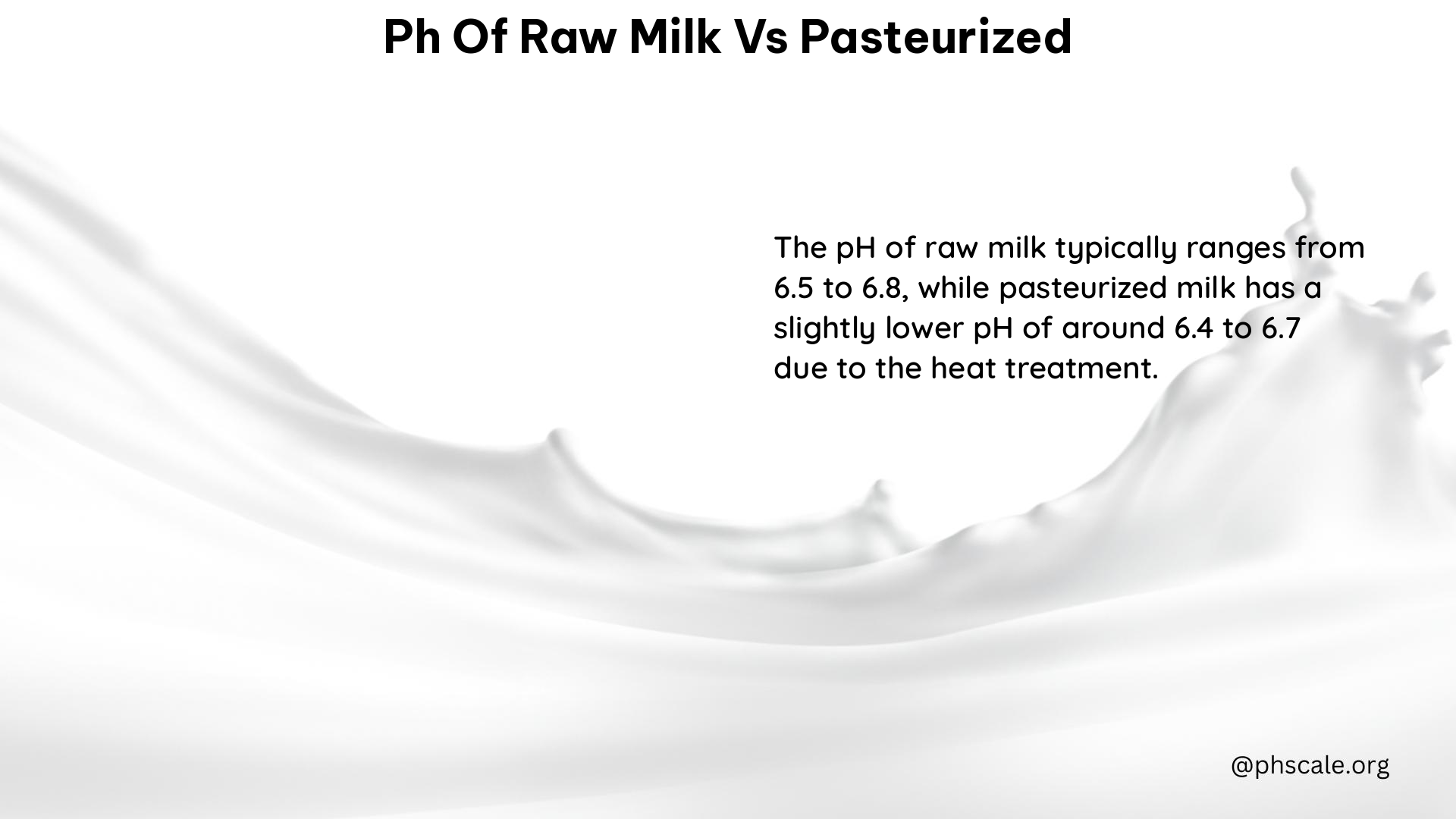The pH of raw milk and pasteurized milk can vary, but generally, raw milk tends to have a slightly higher pH than pasteurized milk. Understanding the differences in pH between these two types of milk is crucial for consumers, as it can impact the milk’s nutritional value, safety, and overall quality.
pH of Raw Milk
Raw milk, which is milk that has not been pasteurized or homogenized, typically has a pH between 6.5 and 6.7. This slightly acidic range is due to the natural presence of lactic acid bacteria in the milk. As raw milk ages and ferments, the pH can decrease further, becoming more acidic.
pH of Pasteurized Milk

In contrast, pasteurized milk tends to have a lower pH than raw milk, typically ranging from 6.24 to 6.49. This decrease in pH is likely a result of the heat treatment during pasteurization, which can alter the milk’s composition and increase the production of lactic acid.
Key Differences
The main differences between the pH of raw milk and pasteurized milk are:
- pH Range: Raw milk has a pH between 6.5 and 6.7, while pasteurized milk has a pH between 6.24 and 6.49.
- Acidity: Pasteurized milk is generally more acidic than raw milk due to the heat treatment during pasteurization.
- Spoilage: Raw milk spoils more quickly than pasteurized milk, leading to a greater decrease in pH over time.
Health Implications
The pH of milk can have important implications for its nutritional value and safety. A lower pH can indicate the presence of harmful bacteria, which can be a concern for human health. Pasteurization helps to kill these bacteria, making the milk safer for consumption. However, some proponents of raw milk argue that the natural bacteria present in raw milk can be beneficial for gut health.
Factors Affecting pH
Several factors can influence the pH of raw and pasteurized milk, including:
- Breed of Cow: The breed of the cow can affect the natural pH of the milk.
- Feed: The cow’s diet can impact the milk’s pH, with certain feeds leading to more acidic or alkaline milk.
- Lactation Stage: The stage of the cow’s lactation cycle can also affect the milk’s pH.
- Processing Methods: The specific pasteurization or homogenization techniques used can influence the final pH of the milk.
Monitoring pH
Monitoring the pH of milk is an important quality control measure for both raw and pasteurized milk producers. By regularly testing the pH, they can ensure that the milk is within the expected range and take corrective action if necessary.
Conclusion
In summary, the pH of raw milk and pasteurized milk can vary, with raw milk generally having a higher pH than pasteurized milk. These differences in pH can have important implications for the milk’s nutritional value, safety, and overall quality. Understanding the factors that influence milk pH and the importance of monitoring it can help consumers make informed decisions about the type of milk they choose to consume.
References
- Raw Farm USA. (2024). LET’S COMPARE: RAW MILK KEFIR VS PASTEURIZED KEFIR. Retrieved from https://rawfarmusa.com/blog/lets-compare-raw-milk-kefir-vs-pasteurized-kefir
- ResearchGate. (n.d.). Comparative Analysis of pH Level Between Pasteurized and UHT Milk Using Dedicated Developed Application. Retrieved from https://www.researchgate.net/publication/339282925_Comparative_Analysis_of_pH_Level_Between_Pasteurized_and_UTH_Milk_Using_Dedicated_Developed_Application
- NCBI. (2023). Quality assessment of raw and pasteurized milk in Gondar city, Ethiopia. Retrieved from https://www.ncbi.nlm.nih.gov/pmc/articles/PMC10020003/
- ARC Journals. (n.d.). Monitoring pH During Pasteurization of Raw Cow’s Milk using Nd:YAG Laser. Retrieved from https://www.arcjournals.org/pdfs/ijarps/v4-i12/1.pdf
- Gonna Need Milk. (n.d.). Raw Milk vs Pasteurized Milk. Retrieved from https://gonnaneedmilk.com/articles/milk-vs-pasteurized-milk/.
